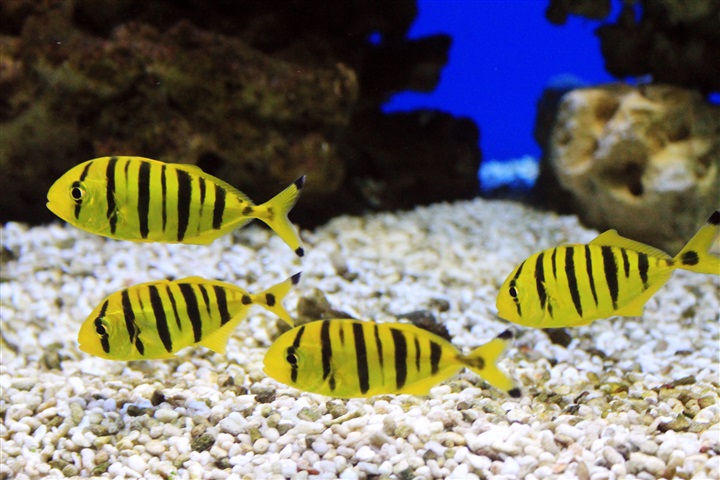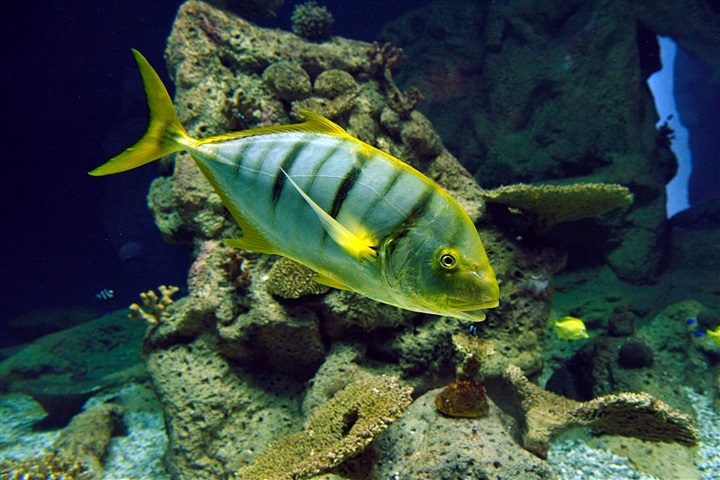Gnathanodon speciosus


| Latin name | Gnathanodon speciosus - (Forsskål, 1775) |
|---|---|
| Local name | Golden trevally |
| Family | Carangidae - Gnathanodon |
| Origin | East Indian Ocean, West Indian Ocean, Australia, Japan, The Red Sea, The Mexican Golf, Indonesia, East Pacific, Central/West Pacific |
| Max length | 120 cm (47.2") |
| Minimum volume |
3000 l (792 gal) |
|---|---|
| Hardiness |
Hardy |
| Suitable for aquarium |
Suitable for most aquarium |
| Reef safe |
Reef safe with caution |
| Aggressiveness | Peaceful |
| Recommended |
Fish Larger crustaceans (Shrimp, crabs...) |
|---|---|
| Mostly |
Small crustaceans (Krill, mysis, artemia...) |
This species eats all kinds of fish, shrimps, crabs etc. which are of suitable size.
This species searches through the sand for food, which can make the water cloudy and shakes up detritus.
In an aquarium their natural food source in the sand is quickly exhausted.
This species needs a very large aquarium when fully grown.
Exactly how big the aquarium should be is hard to say, but the size of this species is such, that it cannot normally be kept in a home aquarium.
This species revels in swimming and requires an aquarium with ample space.
Jacks/Pompanos are a large fish between 10-40 inch (25-100 cm) long, but some will grow up to 6.5 foot (2 meters).
They are predatory fish, which chase prey in open water and/or look for food on the bottom; crustaceans for example.
Some of the species are suitable for aquaria, but do require a lot of space.
| Aquarium trade | Yes |
|---|---|
| Distribution | Indo-Pacific. Eastern Pacific: southwestern coast of Baja California Sur, Mexico and Gulf of California to Ecuador (Ref. 9283). |
| English common names |
Trevally Kelat Golden trevally Golden toothless trevally Golden horsmackerel Golden trevally |
| German common names |
Königsmakrele |
| Danish common names |
Gul hestemakrel |
| French common names |
Belle carangue Carangue royale jaune Carangue d'or Carangue dorée Carangue chasseur |
Scott W. Michael. 2004. Angelfishes and Butterflyfishes (Reef Fishes Series Book 3) TFH Publications / Microcosm Ltd. - (English)
Bob Fenner. Do You Know Jacks? You Will. The Family Carangidae - Wet Web Media - (English)
WWM Crew. FAQs about Jacks, Family Carangidae - Wet Web Media - (English)

